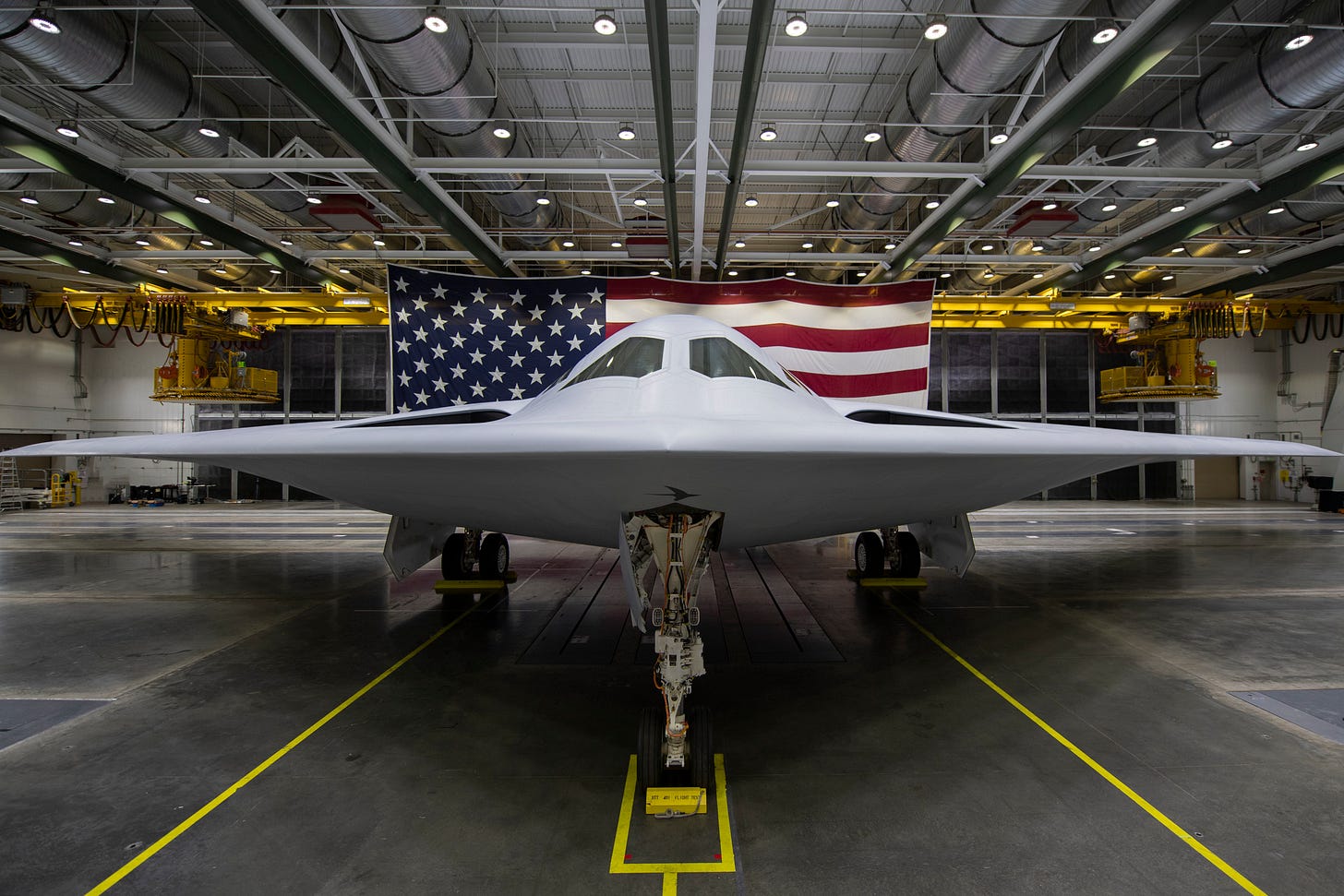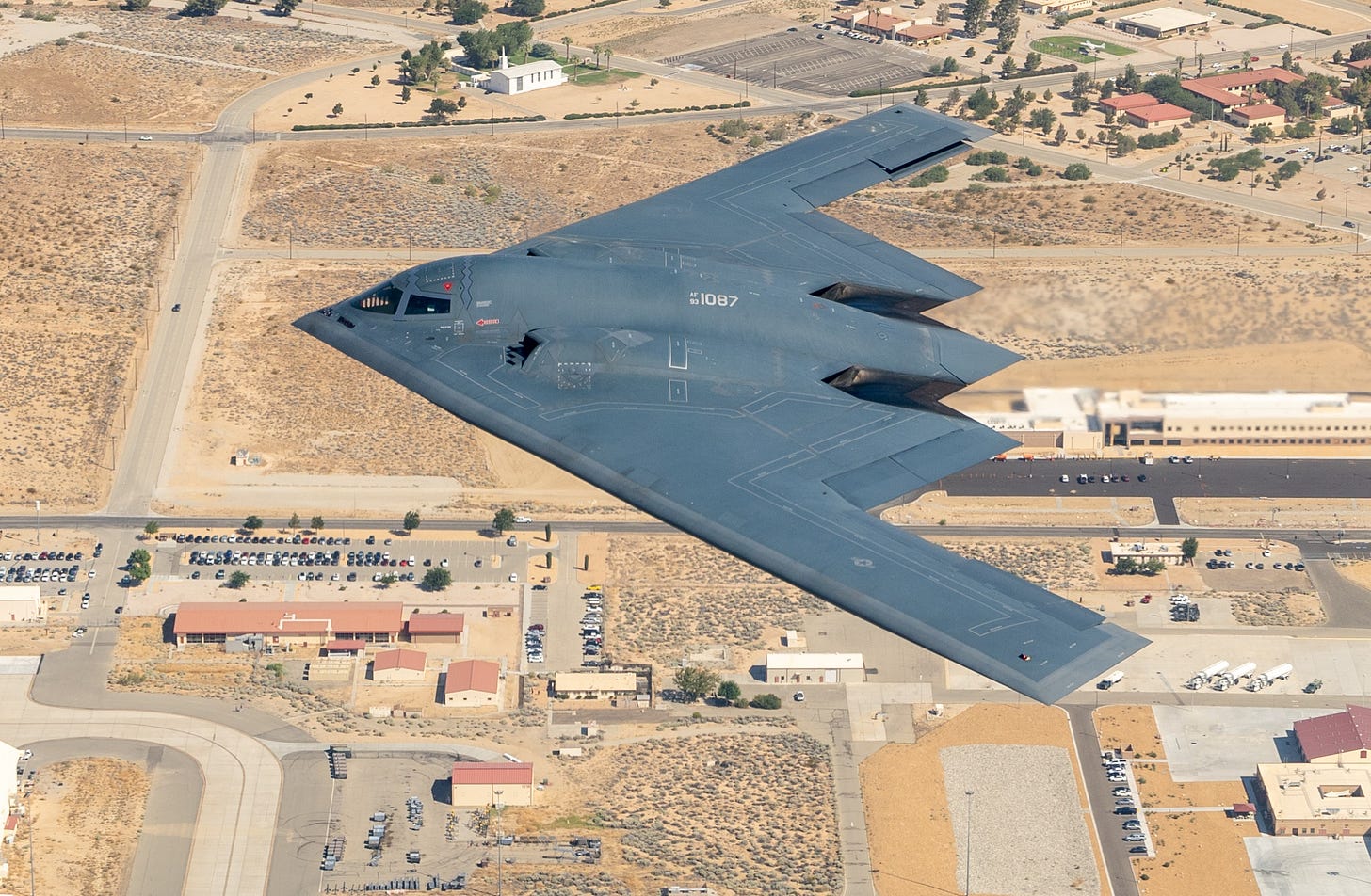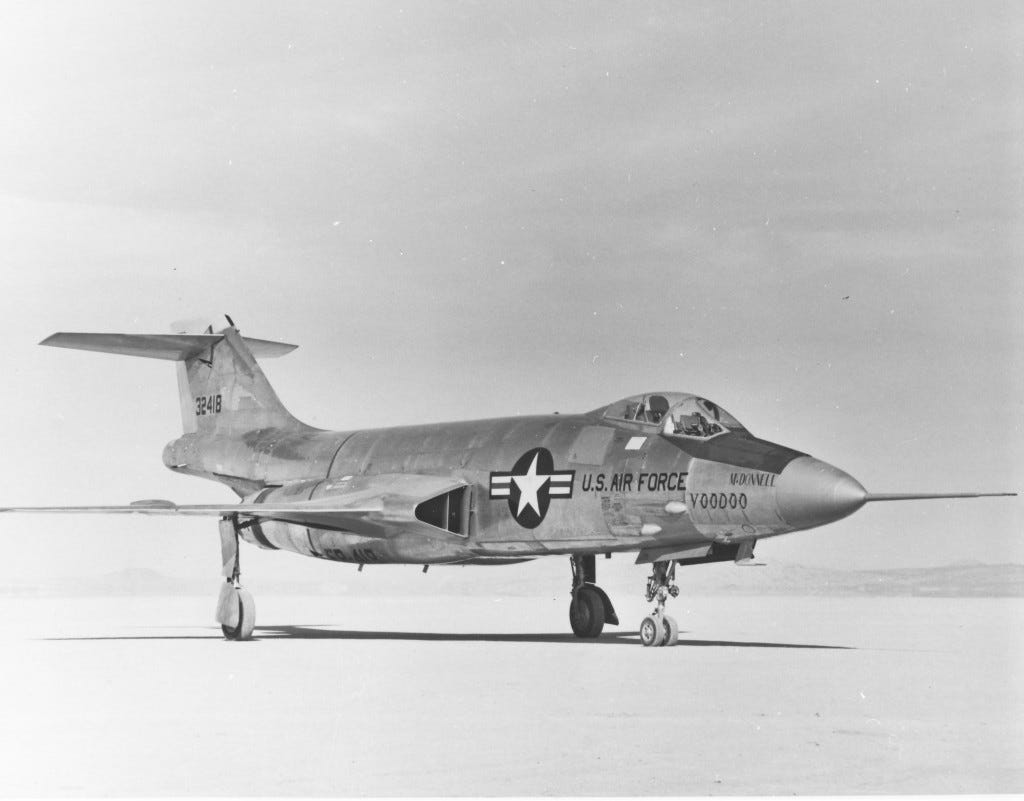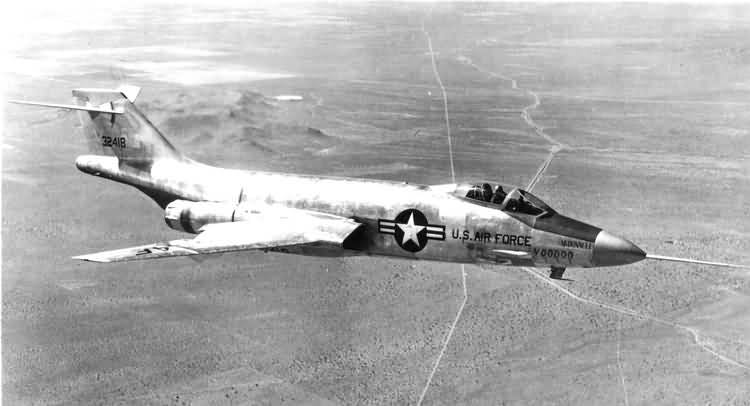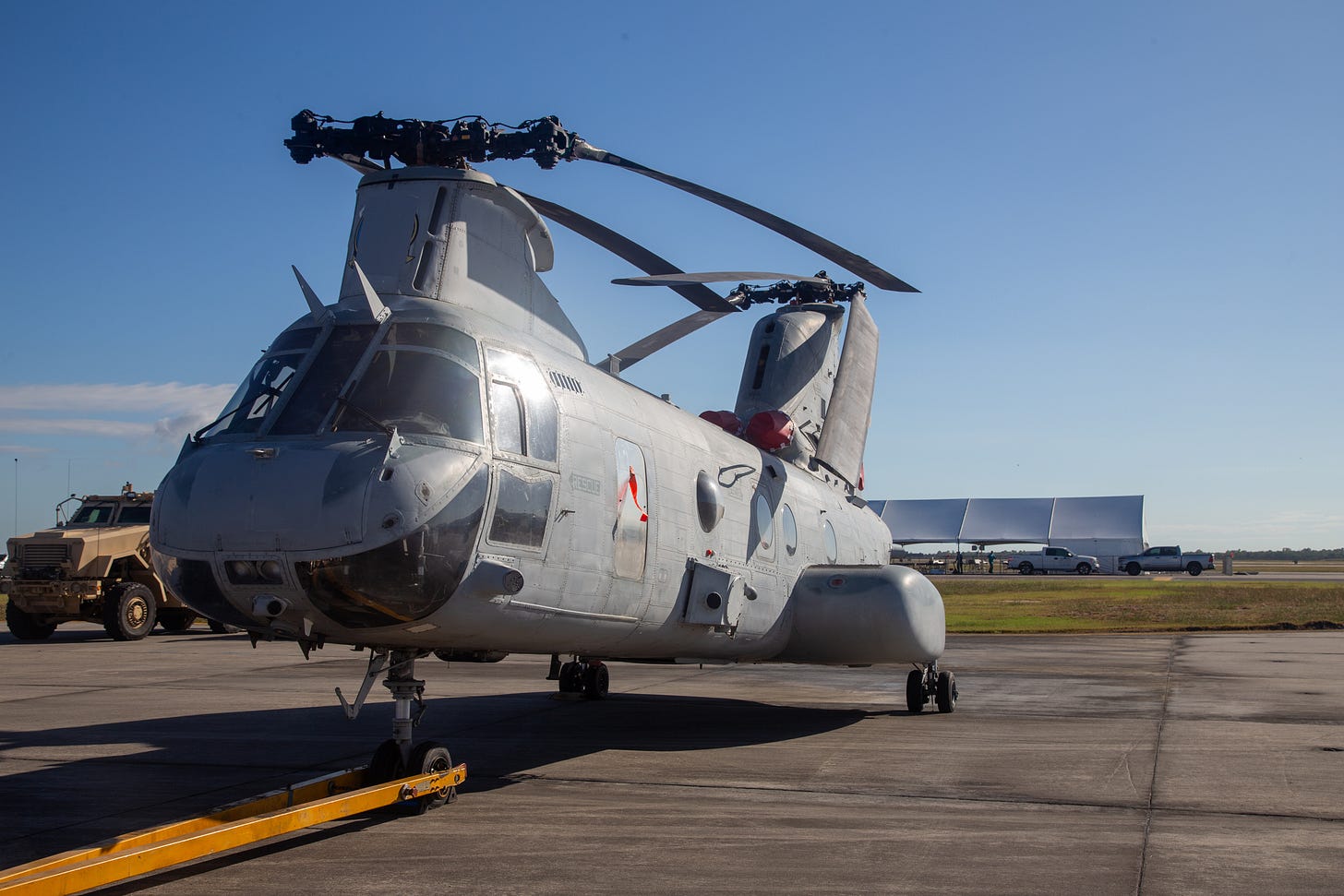From Voodoo to Raider
A first glimpse at the B-21’s hidden exhaust design, and a look back at the F-101A Voodoo’s supersonic debut over 70 years ago.
“With the arrival of the second B-21 Raider, our flight test campaign gains substantial momentum,” Air Force Secretary Troy Meink.
Mission Briefing
A New Look at the Raider’s Secrets
The U.S. Air Force’s newest stealth bomber, the B-21 Raider, has once again offered a glimpse into its closely guarded design. Last week, the second B-21 lifted off from Palmdale’s Air Force Plant 42 for its first flight to Edwards Air Force Base—and with it came the clearest photo yet of the aircraft’s exhaust system.
Until now, official images had carefully avoided showing the Raider’s rear end. A blurry shot from 2023 hinted at its configuration, but the new photo confirms it: the B-21 employs an exhaust system strikingly similar to the B-2 Spirit’s.
Like the B-2, the Raider’s engines are deeply buried in the airframe, with exhaust gases funneled through long ducts before being expelled through shallow, slot-like outlets along the wing’s trailing edge. This design shields the hottest engine components from sensors, diffuses the exhaust plume, and mixes it with cooler bypass air to reduce infrared visibility. For an aircraft designed to slip past the most advanced air defense systems, suppressing its thermal footprint is as vital as its radar stealth.
There are subtle differences. Where the B-2’s nozzles feature a saw-tooth trailing edge, the B-21’s edge is straight and cleaner, reflecting advances in materials and thermal management. The absence of afterburners also limits heat output, further enhancing stealth.
The Raider’s exhaust continues a lineage of innovative solutions across stealth aircraft. The F-117 Nighthawk pioneered flat exhausts in the 1980s, while the B-2 refined them into a system still considered state-of-the-art. Fighters like the F-22 and F-35 compromise with more conventional nozzles to balance stealth with maneuverability and thrust.
Now, with its second aircraft flying, the B-21 program is offering more hints about how the U.S. plans to ensure its next-generation bomber can survive in the toughest skies. Each new detail—no matter how small—adds to the picture of how Northrop Grumman has designed an aircraft expected to carry America’s strike mission well into the 21st century.
This Week in Aviation History
First Flight of the F-101A Voodoo
29 September 1954: the McDonnell F-101A Voodoo thundered into the skies for the very first time over Edwards Air Force Base. At the controls was McDonnell test pilot Robert C. Little, who pushed the sleek new interceptor to Mach 0.9 at 35,000 feet—an impressive debut for an aircraft that would help shape the future of supersonic aviation.
The F-101A was born from the earlier XF-88 Voodoo concept but entered service as a true production machine—no prototypes, just a leap straight into operational hardware - it really was a different time in aircraft design. With its twin Pratt & Whitney J57-P-13 turbojets, the single-seat fighter packed serious power: nearly 15,000 pounds of thrust with afterburner, enough to propel it past 990 miles per hour - all of this in the early 1950s, less than 10 years after WWII. The Voodoo’s combat radius stretched over 1,000 nautical miles, and its arsenal included four 20mm cannons and the capability to deliver a tactical nuclear bomb.
The first Voodoo, tail number 53-2418, went on to play a special role in testing the General Electric J79 afterburning turbojet—the very engine that would later power the legendary F-4 Phantom II. After serving with both the Air Force and General Electric, the aircraft eventually became a training tool before being rescued from the scrap heap and restored. Today, it can be seen on display at the Evergreen Aviation and Space Museum in McMinnville, Oregon.
As for Robert C. Little, the Voodoo’s first pilot, his aviation career was equally storied. A former P-51 Mustang pilot in World War II, Little became one of McDonnell’s top test pilots. He made the first flights of the F3H Demon, the F-101 Voodoo, and later the YF4H-1 Phantom II. Rising through the company’s ranks, he eventually became a vice president of McDonnell-Douglas, overseeing fighter and helicopter programs that carried his fingerprints well into the jet age.
The F-101A Voodoo may not have earned the fame of the Phantom II that followed it, but its first flight 71 years ago marked an important step in the evolution of American supersonic fighters—bridging the gap between early jet designs and the world-beating aircraft that defined the Cold War.
In Case You Missed It
All about the TACAMO mission and its newest platform:
Photo Outlet
Every issue of Hangar Flying with Tog gets you a free image that I’ve taken at airshows:
Feel free to use these photos however you like, if you choose to tag me, I am @pilotphotog on all social platforms. Thanks!
Post Flight Debrief
Like what you’re reading? Stay in the loop by signing up below—it’s quick, easy, and always free.
This newsletter will always be free for everyone, but if you want to go further, support the mission, and unlock bonus content, consider becoming a paid subscriber.
Your support keeps this flight crew flying—and I couldn’t do it without you.
– Tog



